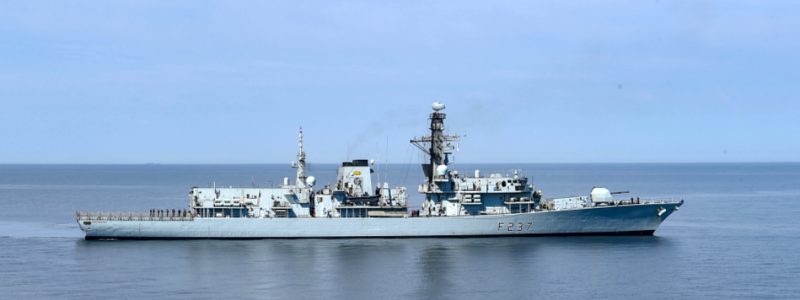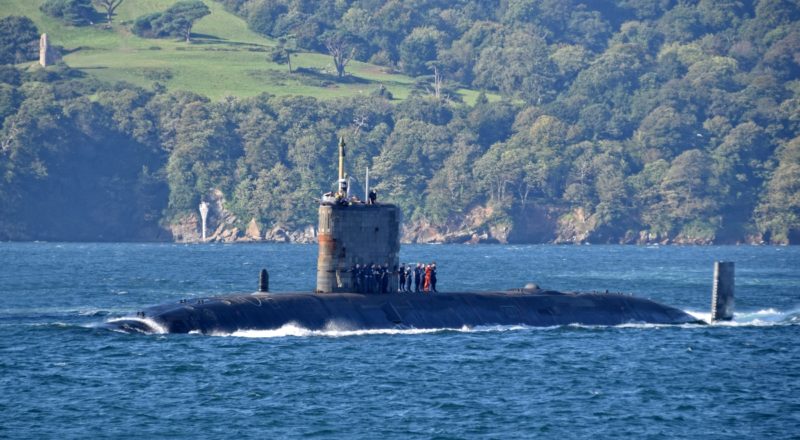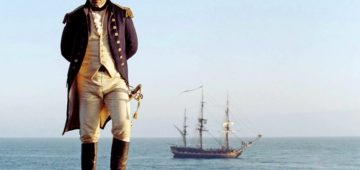The head of the Royal Navy, First Sea Lord Admiral Sir Ben Key, has told an influential committee of MPs that, on a day-to-day basis, half of the Fleet is either at sea or at “very high readiness” to deploy. Sir Ben was last month (Nov) being quizzed about the Navy’s state of readiness by the House of Commons Defence Committee, which asked if the RN’s state of readiness had been impacted by events in the Middle East. The First Sea Lord described the RN as “a globally deployed Navy” operating in a ”number of areas around the world.”
He added: “On a day-to-day basis, our readiness is that 50 per cent of the fleet is either at sea or at very high readiness to deploy. Maritime readiness is not something you can suddenly magic up. If you are bringing a ship out of deep maintenance or refit, crewing it, training it and bringing it to a state of readiness, or bringing it out of a maintenance period, that is something that requires time. Because of how quickly events can change, we need to ensure that a significant proportion of the fleet is at high readiness throughout, so that we can respond in a timely fashion.”

Mark Francois MP asked how many of the Navy’s 17 frigates and destroyers “could fight tonight?” Admiral Key replied: “I am not mandated to have all of those 17 available to fight tonight.” He went on: “We maintain a readiness profile. Some can respond at very short notice and some might require 30 days’ notice, which is perfectly respectable.
If they have come back from a long deployment and they are not required for immediate tasking, we can allow some more intrusive maintenance to take place. By the definition ‘fight tonight’, they would fall short, but they could be quickly brought up to some form of readiness and deployed. I am currently able to meet all the tasks required of me by the defence plan from the frigate and destroyer force that is in the operational fleet.”
Pressed by Mr Francois, Sir Ben admitted “about 50 per cent of the fleet is at high readiness and above.” Mr Francois also challenged the First Sea Lord over reports that during one day in 2023 there was not a single attack submarine (SSN) at sea, which the MP described as an “operational failure”.
The First Sea Lord responded: “If there was no need for those boats to be at sea, that is not operational failure. On that particular day, we were meeting the readiness profile that was required; you can be alongside, and at very short notice to sail. If that is the right place to put a boat at the time, that is entirely sensible. We have to be very careful not to confuse being at sea with readiness. Days at sea is quite a simplistic measurement, because of what it doesn’t demonstrate. A ship alongside, HMS Spey, in Tonga, providing disaster relief after it has suffered a typhoon, scores zero. What it means is that a Type 45, HMS Diamond, alongside at Gotland Island, supporting the Prime Minister as he hosts his Swedish opposite number scores zero.” The First Sea Lord also pointed out that “if there are no Russian submarines in the North Atlantic, why would we need to deploy one of our own submarines? Then, we are burning up core time; we are burning up sailors’ time; we are using time that could be used more efficiently and effectively elsewhere. We deploy those submarines when we need to, which is built into an intelligence picture that we share with our allies and partners under a very sophisticated operation, which has been running for some time.” The First Sea Lord refuted claims that not having any SSNs at sea was “an embarrassment” and explained: “There was no need for any of those submarines to be at sea that day. Would I like the fleet to be more broadly deployed all the time, doing active things? Submariners want to be busy and active; of course they do. But we have to manage against a likely range of tasks, so that we are deploying our small number of SSNs as effectively and efficiently as possible.” Mr Francois asked the Admiral how many of the current six SSNs “could put to sea tonight?”

Sir Ben replied: “I can put to sea the number I am expected to put to sea. If we took some risk judgments around the maintenance profile of those that are at lower readiness, then in some order – I am not an expert on these things – I am sure we could put more to sea, because their crews are available. I am not expected – I don’t think you are expecting me – to be able to say I could put all those submarines to sea today. I can meet the numbers that I am required to put to sea today.” Pressed by Mr Francois on how many, the First Sea Lord answered: “I can put three to sea, I am absolutely sure; that is half the fleet.” Asked if he would like a bigger Navy and additional resources, the First Sea Lord said he would “really like” to “accelerate the pace of transformation from the ships and submarines that we have on build at the moment to the new Navy.” He added: “We are going through a tremendously exciting transformation at the moment: the Type 26, which is a world-leading ASW [Anti-submarine Warfare] frigate; the Type 31s [multi-role frigates], which are a really innovative way of thinking differently about a general purpose frigate; and the new submarines that we have on order. All these are just about to arrive, in strategic terms.” Admiral Key described it as “one of the single biggest transformations in the history of the Navy – when we genuinely move from an analogue Navy to a digital Navy. It is something almost as powerful as when Jackie Fisher, my predecessor many years back, took the Navy from sail and coal into oil, which conceptually drove a different way of thinking and operating. The first thing I would really look forward to is the acceleration to these new platforms, which will be more available than the old ones they replace, more capable than the old ones they replace and more deployable than the old ones they replace. That is an important first stage in growing the Navy, but we have to get through that transformation from the old to the new first before you then step forward into a bigger Navy.”

The First Sea Lord told the committee his “absolute priority” is ensuring the Navy is providing support to delivery of the UK’s deterrent in the North Atlantic.
“Making sure that we are maintaining a sufficiently robust and resilient ASW capability means that I need to take, at times, what look like on the surface some very difficult prioritisation decisions against the money that is accorded to me to do so.” Referring to the build delays for HMS Glasgow, the first of the Type 26 frigates, Admiral Key told the committee: “These are complicated first prototypes that are being built here.” He added that the Navy is determined to ensure “the rest of the class must not be affected in the same way. I am not here to defend the shipbuilding industry, but they are also fundamental to the Royal Navy being able to do this, so they are partners in this endeavour. What is really important is that we don’t see a knock-on effect, but that the learning that they take from the journey of HMS Glasgow translates into HMS Cardiff, HMS Belfast and the Batch 2 [five Type 26s], which is now on order as well, so that the drumbeat picks up. Providing that we see that, then from my point of view, and notwithstanding some of the frustrations that you point to at the moment, I think we will see ourselves set on a stable path quite soon.”
Derek Twigg MP suggested there were “strong rumours” that the ageing Type 23 frigate HMS Westminster will not be refitted to extend her service. Rear Admiral Steve Moorhouse, the Navy’s Director Force Generation, handled that question saying that “no decisions” had been made.
Asked about the Navy’s “warfighting readiness,” the First Sea Lord said the RN is “definitely on a significant journey.” And he added: “We really welcome the investment that has been made with the NATO [sic] Strike Missile and the contributions that the Norwegians are making to allow us to increase our strike capability across the frigate fleet. That is a tremendous step forward. We continue to look at what the future weapon mix will need to be.” The First Sea Lord admitted munitions stockpiles are a concern. He told MPs: “One of the things that we have to be ruthlessly honest about is that what we have seen taking place in Ukraine and off the coast of Ukraine in the Black Sea, and all the rest of it, has challenged a lot of us in the way that we thought about future conflict in the European theatre. For a number of reasons, over a number of years, driven by national financial envelopes or whatever, a number of risk positions were taken in operational capability. They were clearly ones that my predecessors were content to take at the time, but you have to adapt when circumstances change. No one was predicting war in south-east Europe to be as we find ourselves today, so we have to observe and learn from that, and adapt as quickly as we can to ensure that we are not found short should the conflict there broaden out across wider Europe.”
Admiral Key stressed that the UK will go to war with NATO allies and therefore would not be alone against the Russian Navy should a state versus state major war erupt at sea. He advised MPs that “the NATO maritime structure for developing warfighting capability is well built and that is not being changed; it is being sharpened by the change to the NATO force model that is coming across. But we already allocate more of our maritime force, proportionally, than almost any other nation in NATO, so for us, that level of commitment remains a truth. The new force model is going to make, I think, some quite demanding statements around the capabilities that we put. But the concept in itself, and that scale of contribution, feel entirely comfortable to me.”



Comments
Sorry, comments are closed for this item